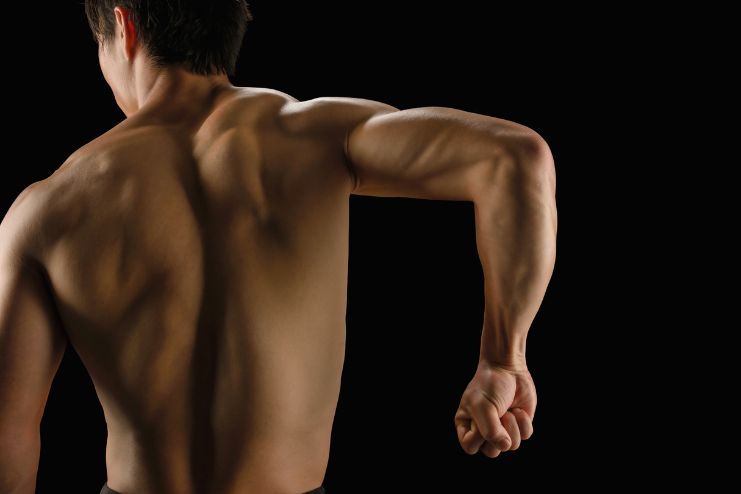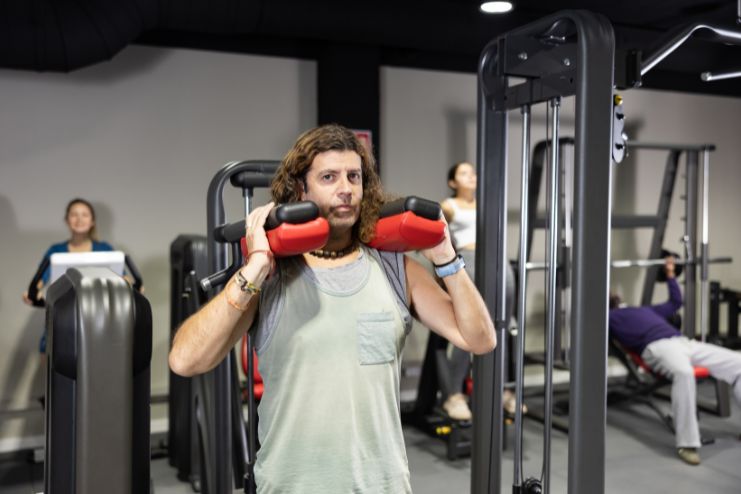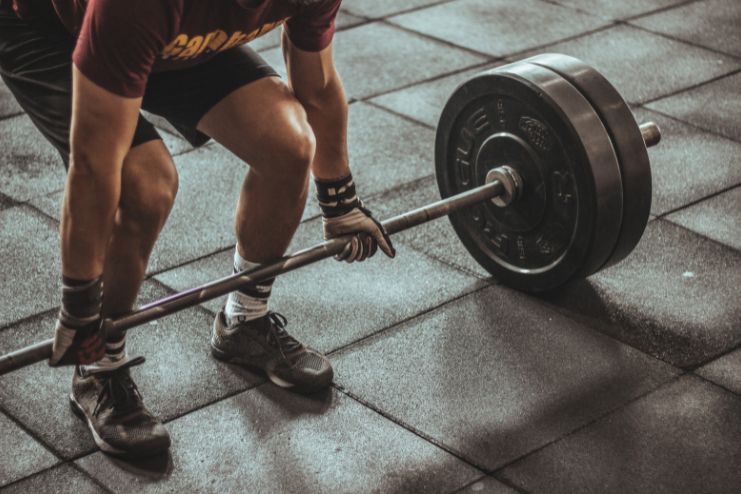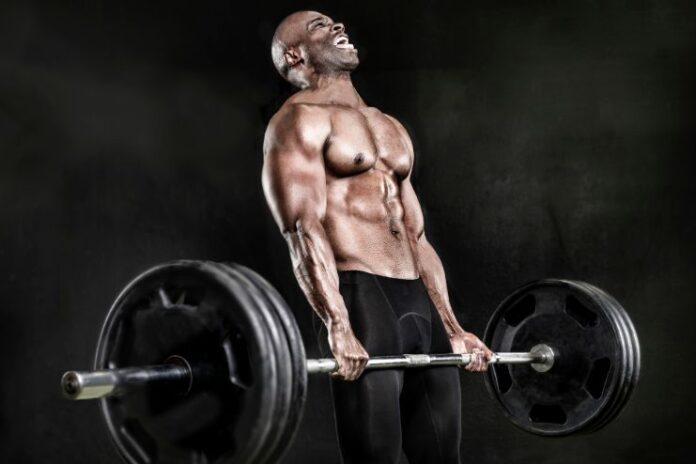Think you have to lift heavy to build muscle? Not really. It’s a common belief that you need to move serious weight to experience serious gains, but that’s not the full story. Lifting heavy is not the only way to build lean, strong muscle.
More and more research (and some pretty impressive real-life transformations) have proved that you can build muscle without ever touching a heavy dumbbell. Whether you’re stuck at home with zero gym access, coming back from an injury, or just not into the whole “lift till you drop” vibe, there are smarter ways to train. Think resistance bands, bodyweight moves, and techniques that make your muscles work, not just lift.
We’ll break down the science behind light-weight training, bust a few myths, and show you exactly how to train smarter, not necessarily heavier. Because at the end of the day, it’s not about how much you lift, it’s about how well you challenge your muscles.
Understanding Muscle Growth: The Basics of Hypertrophy

Muscle growth isn’t just for bodybuilders or gym rats—it’s a smart, science-backed process that anyone can tap into, whether you’re lifting weights, doing push-ups at home, or working out with resistance bands. If you’ve ever wondered how muscles grow (and whether lifting heavy is the only way), let’s break it all down in a way that makes sense—and works for your goals.
At the heart of muscle growth is hypertrophy, which is just a fancy term for increasing the size of your muscle fibers. There are two main drivers of this:
- Mechanical tension — usually created through lifting heavy objects or slow, controlled movements that challenge your muscles.
- Metabolic stress — that burning, pumped feeling you get from high reps, short rest periods, or techniques like blood flow restriction training.
While both of these factors help spark muscle growth, the real secret sauce is progressive overload—consistently pushing your muscles to do more over time. That doesn’t always mean going heavier. It can mean doing more reps, more sets, increasing time under tension, slowing your tempo, or reducing rest time. In other words:
Tension + Volume + Consistency > Just Lifting Heavier.
There are also two types of hypertrophy you should know about:
- Myofibrillar hypertrophy: This is where you increase the number and size of the actual muscle fibers (myofibrils), which tend to lead to more strength and denser muscles.
- Sarcoplasmic hypertrophy: This boosts the amount of fluid (sarcoplasm) surrounding muscle fibers, giving your muscles that full, pumped look.
Muscle growth doesn’t happen overnight. It’s a gradual process that starts with tiny tears in your muscle fibers during training. Your body then kicks into repair mode, rebuilding those fibers stronger and thicker than before—but only if you provide it with the right tools. That means:
- Eating enough protein to support recovery and repair.
- Getting proper sleep and managing stress.
- Staying consistent with your workouts and progression.
Keep challenging your body, fuel it right, and stay consistent. That’s how real progress happens.
Read More: How to Build Muscle Over 40: Age-Specific Training Tips
Can You Build Muscle with Light Weights?

Short answer? Yes—you definitely can. The old-school mindset of “go heavy or go home” is slowly being replaced by a more nuanced (and science-backed) approach to training. Lifting light doesn’t mean lifting less effectively if you train the right way.
Research has shown that using light weights, sometimes as low as 30% of your one-rep max, can still lead to significant muscle growth, as long as you’re pushing close to muscular failure. That means the last few reps of every set should feel tough, almost unbearable. Whether you’re curling 10 lbs or 30, what really matters is how much you’re challenging the muscle.
To make light-weight, high-rep training work for you, here’s what you need to focus on:
- Train close to failure — The burn in those final reps is your friend.
- Increase volume — More reps or more sets means more stimulus.
- Dial in your form — With lighter loads, you have a perfect opportunity to master your technique and build that crucial mind-muscle connection.
- Use tempo to your advantage — Slow down your reps to increase time under tension, which boosts hypertrophy even without heavy weights.
Training with light weights helps build muscle endurance, improves overall control, and reduces the risk of injury. While heavier lifting is generally better for pure strength gains, lighter training can contribute to strength when performed with intensity and consistency.
Some days, heavy lifting might be your go-to; other days, light weights with high reps could be exactly what you need. The smartest approach? Mix it up, listen to your body, and train in a way that challenges you and aligns with your goals.
Proven Methods to Build Muscle Without Heavy Weights

Here are four proven techniques that can help you stimulate hypertrophy (muscle growth) without ever stepping foot under a heavy barbell.
High-Rep Training
Forget the old “8 to 12 reps or bust” rule. Going for 15 to 30 reps per set, especially when taken close to fatigue, can be just as effective for muscle growth. This method is perfect for bodyweight moves, resistance bands, or light dumbbells.
- Why it works: It builds muscular endurance, improves joint stability, and increases training volume—all important for long-term gains.
- Pro tip: Make sure those last few reps feel tough. You want to reach or get close to muscle failure to truly spark growth.
Slow Tempo and Time Under Tension
Muscles don’t count the weight—you guessed it—they count time under tension. By slowing down each rep (think 3 seconds on the way down, 2 seconds up), you force your muscles to work harder and longer.
- Why it works: It boosts metabolic stress, helps you master form, and adds serious intensity without adding weight.
- Try this: Next time you do push-ups, slow them down—your muscles will feel the difference instantly.
Drop Sets and Supersets
Want to turn up the heat? Drop sets and supersets are your go-to.
- Drop sets: Start with a moderate weight and, once you hit fatigue, reduce the weight and keep going.
- Supersets: Pair two exercises back-to-back with little to no rest (e.g., push-ups followed by band chest presses).
- Why it works: Both methods jack up training intensity and volume—two key drivers of muscle growth, even with lighter loads.
Resistance Bands and Bodyweight Variations
No gym? No problem. Resistance bands and bodyweight exercises can deliver serious results—if you use them wisely.
- Resistance band winners: Rows, chest presses, glute bridges, push-ups with band resistance, banded squats.
- Bodyweight go-tos: Bulgarian split squats, push-up progressions, wall sits, planks with shoulder reach.
- Why it works: These tools allow you to hit your muscles from new angles, increase time under tension, and create progressive overload—all without needing heavy equipment.
In short, if you’re smart with your training approach, you don’t need to lift heavy to build lean, strong, functional muscle.
Read More: Silent Workouts: Can Low-Impact Exercises Be Just as Effective?
The Benefits of Training Without Heavy Weights

When most people think of building muscle or getting stronger, they picture clanking barbells and heavy plates. That isn’t entirely true!
Light doesn’t mean easy. When done right, this kind of training challenges your muscles, protects your joints, and supports long-term progress in ways that heavy lifting sometimes can’t.
Safer on Joints and Tendons
One of the biggest perks of light training is how joint-friendly it is. Without the strain of heavy loads, your tendons and ligaments stay healthier, making this approach ideal for injury prevention and longevity, especially for beginners, older adults, or those recovering from physical setbacks.
Better Recovery, Less Burnout
Lighter training is generally easier to recover from, meaning you can train more often without feeling wrecked the next day. It lowers your risk of overtraining and reduces systemic fatigue, making your fitness journey more consistent and sustainable.
Increased Flexibility and Range of Motion
Working with less load allows you to move through a full range of motion, helping to enhance joint mobility and overall flexibility, key factors for both performance and injury prevention.
Improved Form, Focus, and Mind-Muscle Connection
Since you’re not fighting gravity as hard, it’s easier to focus on technique, control, and form. This helps you build a stronger mind-muscle connection, leading to more efficient and effective muscle engagement, an essential part of long-term gains.
Builds Functional Strength and Core Stability
Bodyweight training and band work often mimic real-life movement patterns, building strength that translates to everyday activities. Plus, exercises like planks, squats, and push-up variations inherently engage your core, improving posture, balance, and coordination.
Great for Fat Loss and Lean Muscle Development
You don’t need a barbell to build a lean, defined physique. High-rep, low-load training helps increase muscular endurance, burns calories, and supports lean muscle growth, all while keeping stress on your joints to a minimum.
Boosts Bone Health
Even moderate resistance (like bands or light dumbbells) can stimulate bone-building activity, helping to improve bone density, which is especially important as we age.
Extremely Accessible
No gym? No problem. You can do these workouts anywhere—at home, office, park, or while traveling. No fancy gear required. Just a bit of space, some creativity, and consistency.
Endurance and Mental Benefits
Lightweight resistance training can improve muscular and cardiovascular endurance, and it comes with a mental edge too, reducing stress, boosting mood, and enhancing overall well-being.
Smart, structured training without heavy weights can give you strength, definition, mobility, and a better relationship with your body—all while being kind to your joints and easy to maintain.
Read More: 8 Best Plant-Based Proteins for Muscle Building
When Lifting Heavy Still Makes Sense

While light weights and high reps can build muscle and boost endurance, there are still times when going heavy is the better—or even a necessity. It all depends on your goals, training experience, and where you are in your fitness journey.
Heavy lifting is a strategic tool. When used with proper form and structure, it unlocks specific benefits that lighter training just can’t match.
Here’s when going heavy makes the most sense:
- Building Max Strength: Heavy weights are essential if you’re training for raw strength or powerlifting goals.
- Breaking Plateaus: Progress stalled? Heavier loads can provide the new stimulus your muscles need.
- Following a Strength Program: Structured plans like 5×5 or Wendler rely on heavy lifts to push performance.
- Boosting Neural Adaptation: Heavy lifting trains your nervous system to fire muscles more efficiently and is essential for building strength and power.
- A Word of Caution: Rotate phases, focus on form, and train smart to avoid burnout or injury.
Read More: Top 5 Weightlifting Belts: Supportive Gear for Heavy Lifting and Muscle Development
Conclusion
So, do you really need to lift heavy to build muscle? Not at all. As we’ve seen, muscle growth isn’t just about how much weight you lift—it’s about how you train.
Knowing your body, goals, and what keeps you motivated is essential. For some, that might be a killer drop set with resistance bands; for others, it’s hitting a new PR in deadlifts. Both paths can lead to gains, as long as you’re putting in the effort.
At the end of the day, muscle doesn’t care if the resistance comes from a 200-pound barbell or your own bodyweight. What matters is challenge, consistency, and progressive overload.
References
- https://www.livemint.com/news/business-of-life/muscle-growth-does-not-depend-on-the-amount-of-weight-you-lift-11617642310693.html
- https://www.hss.edu/article_low-weight-high-reps.asp
- https://www.onlymyhealth.com/how-to-build-muscle-without-lifting-heavy-1679310338
- https://www.cnet.com/health/fitness/how-to-get-stronger-without-lifting-any-weights/
- https://hydrow.com/blog/strength-training-without-weights-key-benefits-and-12-exercises-to-try/
- https://www.health.harvard.edu/exercise-and-fitness/the-advantages-of-body-weight-exercise
- https://medium.com/in-fitness-and-in-health/high-level-strength-training-without-lifting-weights-70ecd403933d
- https://pmc.ncbi.nlm.nih.gov/articles/PMC8126497/
- https://physoc.onlinelibrary.wiley.com/doi/10.1113/EP090655
- https://pmc.ncbi.nlm.nih.gov/articles/PMC6383082/
- https://www.glamour.com/story/can-light-weights-get-you-just-as-toned-as-heavier-ones
In this Article


















